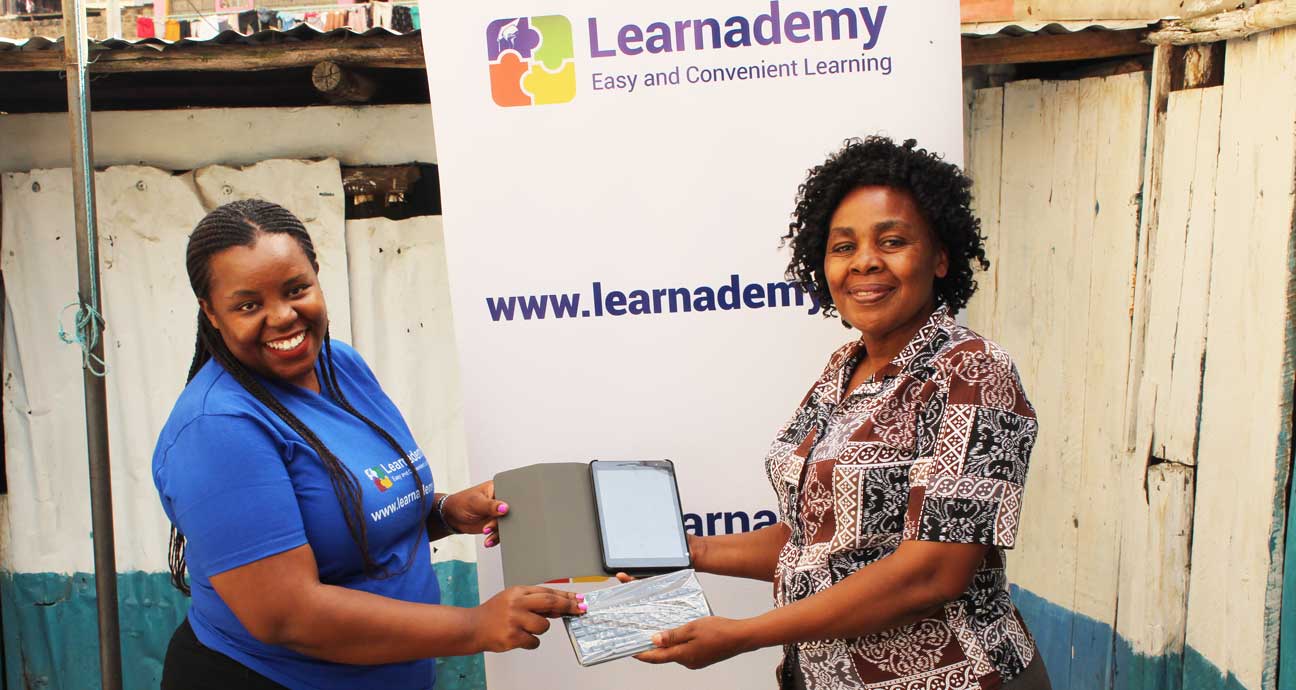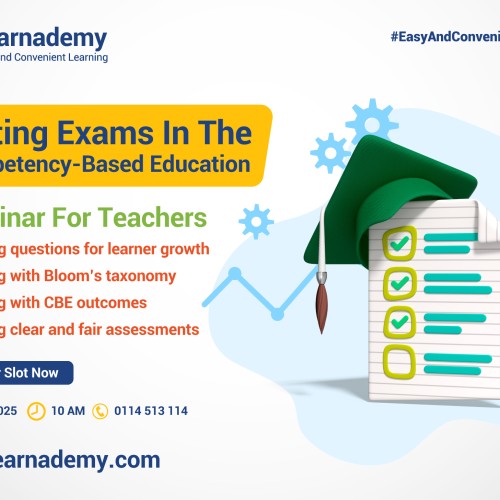-
Back
- Blog
- Browse Blogs
- Blog Post
- Get In Touch
-
Explore
- Sign up
- Login
Blog Inquiry

Leaving No School Behind: Learnademy’s Bold Step Towards EdTech Equity
12 May 2025 CSRThe Digital Divide in Education
In a small rural school outside Nairobi, a teacher writes lesson notes on a chalkboard while her students strain to see from the back of the crowded classroom. Nearby, a private school streams interactive lessons on tablets, with students collaborating on digital assignments. The difference? Access.
This disparity isn’t just about resources—it’s about equity in education
This is the reality for thousands of schools across Kenya—and the world. While education technology (EdTech) promises efficiency, engagement, and equity, its benefits remain out of reach for many. Financial constraints, lack of devices, and limited digital literacy keep countless educators and learners on the sidelines of the digital revolution.
That’s why Learnademy, a leader in Learning Management Systems (LMS), has launched the “Leaving No School Behind Campaign”—a Q2 Corporate Social Responsibility (CSR) in EdTech campaign designed to bridge this gap. More than just discounts or donations, this initiative is a moral commitment: no school, no matter its financial capacity, should be excluded from the tools that define modern education.

As Learnademy CEO Muliande Alex puts it:
This campaign is our bold statement that education technology is a key ingredient in ensuring optimized operations and improved efficiency for schools—and thus, schools, regardless of their capacity, should be supported to access these tools.
This is the story of how Learnademy is turning that belief into action.
The Stark Reality: Why Many Schools Are Left Offline
Data from Learnademy’s Q4 2024 and Q1 2025 surveys revealed a troubling trend: while 90% of school administrators expressed interest in adopting a Learning Management System (LMS), 65% cited cost as the primary barrier. Another 40% lacked the necessary devices—tablets, laptops, or stable internet—to even consider digital learning.
Joan Lemeita, Learnademy’s Relationship Manager, has seen this firsthand:
I’ve visited schools where teachers keep records in tattered notebooks because they can’t afford a basic school management system. Others share a single outdated computer for all administrative work. The enthusiasm for EdTech in Kenya exists—but the resources aren’t.
The consequences are far-reaching:
- Manual processes eat up time that could be spent teaching.
- Parents lack school communication tools (SMS/email updates) to track fees or student progress.
- Learners in underserved areas miss out on digital inclusion for interactive content and remote learning opportunities
This isn’t just about convenience, but also about dignity, opportunity, and fairness.

How the Campaign Works: Breaking Down Barriers
The “Leaving No School Behind” campaign tackles these challenges through four key pillars:
1. Affordability for All
- Up to 50% discounts on annual LMS subscriptions for qualifying schools.
- Zero-rated access for institutions serving marginalized communities (e.g., children’s homes, schools for learners with disabilities).
2. Technology Where It’s Needed Most
- Donated laptops and tablets to schools with no existing devices to enable online learning platforms.
- Partnerships with Internet Service Providers (ISPs) to improve connectivity in remote areas.
3. Training for Sustainable Adoption
- Capacity-building workshops for teachers on education technology and school management systems.
- Student digital literacy programs to ensure learners can navigate online platforms.
4. Prioritizing the Most Vulnerable
- Special focus on schools for People Living with Disabilities (PWDs), low-income areas, and rural communities to advance equity in education.
We’re empowering schools through technology- not just handing out tools.
Joan - Relationship Manager - Learnademy.
Voices from the Ground: Stories of Change
A Teacher’s Relief
At Real Hope School, a private school dealing with marginalized learners in Mlolongo area, Machakos County, headteacher Madam Jane used to spend hours tallying fee payments and learner records in a ledger. Now, with Learnademy’s LMS and a donated tablet, she generates fee reports in minutes and manages learner/parent records.
Parents no longer complain about missing receipts. We use the school communication tools (SMS reminders) to reduce parent conflicts—it’s a game-changer.
Madam Jane - Real Hope School

Why LMS Adoption Transforms Schools
Beyond equity, Learnademy’s platform offers tangible operational benefits:
- Smooth communication: Involves bulk SMS (for parents with feature phones), frequent email updates, and digital noticeboards to keep parents and teachers aligned.
- Financial clarity: The automated fee tracking reduces errors and disputes.
- Curriculum management: Teachers can easily upload lessons and assessments within seconds.
- Data-driven decisions: The frequent analytics help schools spot trends, like dropping attendance, before they escalate.
For overburdened administrators, these tools enable empowering schools through technology.
The Bigger Picture: CSR as a Force for Good
Corporate Social Responsibility in EdTech isn’t charity—it’s an investment in collective progress. When companies like Learnademy step in, they:
- Accelerate digital inclusion where governments fall short.
- Model how EdTech in Kenya can bridge gaps, prioritizing impact over profit.
- Inspire other innovators to prioritize equity in education.
This campaign isn’t a one-off. It’s a blueprint for the future of equitable education. It proves education technology can be both ethical and effective.
Closing Thought: A World Where No School Is Left Behind
The digital age shouldn’t be a privilege, it’s a right. As Learnademy rolls out this campaign, the message is clear: transforming education starts with leveling the playing field. Whether through subsidized access, devices, or training, every step erases a barrier.
To every educator, policymaker, or partner reading this: the tools exist. The need is evident. The time to act is now. Because when we leave no school behind, we unlock potential in every learner, everywhere.









